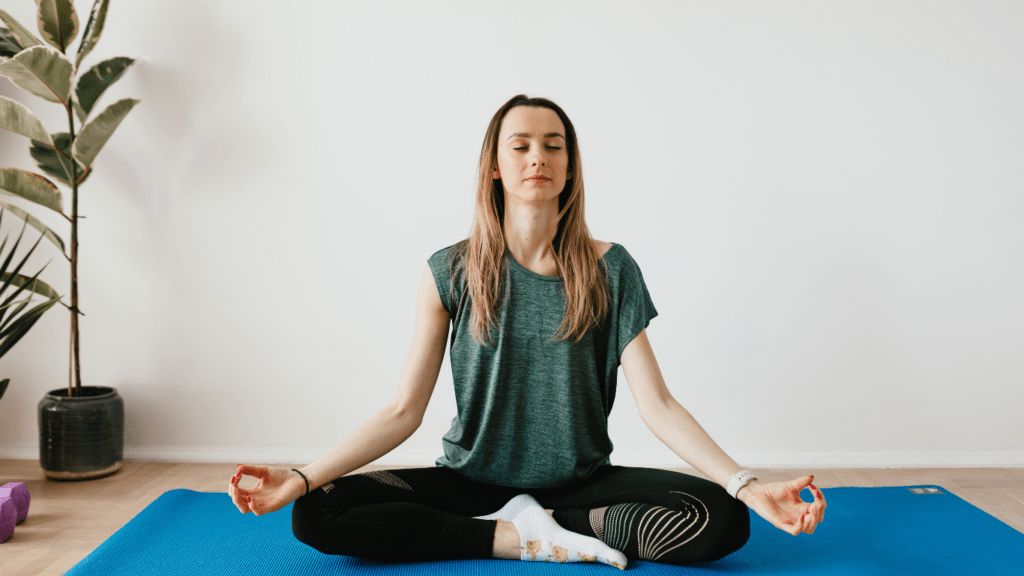Benefits of a Morning Meditation Routine
Morning meditation offers several advantages, enhancing both mental and physical well-being. Below are key benefits:
- Increased Focus and Concentration
Practicing meditation in the morning sharpens focus throughout the day. Regular meditators find it easier to direct their attention intentionally, avoiding distractions. - Reduced Stress Levels
Morning meditation lowers cortisol levels, the stress hormone, by promoting relaxation. This reduction helps manage stress, creating a calmer start to the day. - Enhanced Emotional Well-Being
Meditation fosters a positive mindset, reducing symptoms of anxiety and depression. It improves mood by increasing dopamine and serotonin levels, which are neurotransmitters associated with happiness. - Improved Sleep Quality
Morning meditation positively impacts sleep patterns, promoting more restful nights. It aligns the body’s internal clock, making it easier to fall asleep and wake up naturally. - Boosted Immune System
Regular meditation strengthens the immune system by reducing inflammation. Practitioners often experience fewer illnesses and quicker recovery times. - Increased Self-Awareness
Meditation encourages introspection and self-reflection. This awareness leads to better emotional regulation and a deeper understanding of one’s thoughts and behaviors. - Enhanced Productivity
A structured morning meditation routine improves productivity. By reducing mental clutter, it allows for clearer thinking and more efficient task management. - Better Decision-Making
Meditation enhances decision-making skills by fostering a balanced, non-reactive mindset. This clarity is crucial for making thoughtful and effective decisions.
Implementing a morning meditation routine can lead to noticeable improvements in various aspects of life.
Essential Steps to Start
Starting a morning meditation routine involves a few essential steps to ensure a consistent and effective practice.
Set a Clear Intention
Having a clear intention helps focus the mind and guide the meditation. I recommend starting with simple goals like reducing stress or increasing focus. Align the intention with personal needs to maximize the benefits.
Choose a Quiet Space
Creating a dedicated meditation space minimizes distractions. I suggest selecting a quiet room or a peaceful corner in your home. Make sure it’s comfortable and free from disturbances to encourage relaxation.
Select the Right Time
Consistent timing makes meditation a habit. I find that morning sessions are best before the day gets busy. Choose a time when you’re least likely to be interrupted and stick with it daily to build a routine.
Techniques to Consider
Choosing effective meditation techniques is crucial for building a sustainable morning routine. Here are several methods to consider:
Mindfulness Meditation

Mindfulness meditation focuses on being present in the moment. I pay attention to my thoughts and feelings without judgment, which helps increase self-awareness. Sitting in a quiet place, I close my eyes, breathe deeply, and concentrate on my breath. When my mind wanders, I bring my focus back to my breathing. Studies show that mindfulness meditation can reduce stress and improve emotional well-being.
Guided Meditation
Guided meditation uses audio or video instructions to lead the session. I often use apps like Headspace or Calm for this purpose. Listening to a guide helps me stay focused and follow along with specific instructions. Many guided meditations target relaxation, stress reduction, or visualization practices. This technique is beneficial for beginners who need structure during their practice. Research indicates guided meditation can enhance focus and provide immediate stress relief.
Breathing Exercises
Breathing exercises form the foundation of meditation practices. Techniques like deep breathing or box breathing (inhaling, holding, exhaling, and pausing for equal counts) are effective. I typically start my morning meditation with a few minutes of focused breathing. This practice helps regulate my heartbeat and calm my mind. Scientific evidence supports that consistent breathing exercises can lower cortisol levels and improve overall physical and mental health.
These techniques provide various options to enhance your morning meditation routine.
Building Consistency
Staying consistent with your morning meditation routine is key to experiencing its full benefits. By addressing common obstacles and establishing strong habits, you’ll create a sustainable practice.
Overcoming Common Obstacles
Common obstacles to a consistent meditation routine include lack of time, distractions, and difficulty focusing. To address these issues:
- Lack of Time: Wake up 10 minutes earlier or integrate meditation into your morning activities, such as while drinking your coffee.
- Distractions: Choose a quiet, designated space for your practice. Inform household members about your meditation time to minimize interruptions.
- Difficulty Focusing: Start with guided meditations or short meditative exercises, gradually increasing the duration as you become more comfortable.
By acknowledging these challenges and implementing solutions, you improve your chances of maintaining a consistent practice.
Establishing a Habit
Establishing meditation as a morning habit involves several practical steps:
- Set a Consistent Time: Meditate at the same time each day to condition your mind and body to the routine.
- Use Reminders: Set an alarm or use a meditation app that provides reminders and tracks your progress. Apps like Headspace and Calm are popular for this purpose.
- Pair with Existing Habits: Integrate meditation with other daily routines, like brushing your teeth, to reinforce the habit.
- Start Small: Begin with short sessions, even just five minutes, and gradually increase the duration as it becomes a seamless part of your morning.
Taking these steps helps turn morning meditation into a rewarding and unbreakable part of your daily schedule.
Integrating Meditation with Daily Activities
Integrating meditation with daily activities enhances its impact and makes it more manageable. Here are several ways to do this:
Start with Morning Stretches
Add short meditation after morning stretches. This combination provides a gentle start to the day and increases flexibility while calming the mind.
Practice Mindful Eating
During breakfast, focus on each bite. Notice flavors, textures, and aromas. This way, you’re incorporating mindfulness and gratitude into a routine activity.
Use Commute Time
Turn your commute into a meditative experience. If driving, focus on breathing and being present. Use public transportation? Try a guided audio meditation.
Take Mindful Breaks
Incorporate short meditation breaks during work. A five-minute breathing exercise can reduce stress and improve productivity.
Combine with Exercise
Post-workout meditation helps in cooling down and can deepen relaxation. After yoga, for example, a short meditation session can enhance the benefits of both practices.
Engage in Mindful Cleaning
Turn cleaning into a mindfulness exercise. Focus on the sensations and movements. This transforms a mundane task into a meditative experience.
Wind Down with Bedtime Meditation
End the day with a short meditation. It prepares your mind for rest, improving sleep quality and overall relaxation.
Each of these approaches seamlessly integrates meditation, making it a natural part of your daily life.



 Hiking Trail Guide Expert & Outdoor Adventure Curator
Keturaha Perrymaners is an experienced trail guide and hiking enthusiast with an unparalleled passion for discovering and exploring nature’s most beautiful and secluded paths. As the hiking trail expert at Whisper Forest Ways, Keturaha curates comprehensive guides that cover everything from beginner-friendly walks to challenging multi-day treks. Her deep knowledge of terrain, weather patterns, and outdoor safety ensures that her recommendations cater to hikers of all levels, helping them prepare for their adventures with confidence. Whether you’re seeking scenic trails for mindfulness walks or rugged paths for a physical challenge, Keturaha’s expertly crafted guides provide the insights and inspiration you need to venture into the wilderness and fully immerse yourself in nature’s beauty.
Hiking Trail Guide Expert & Outdoor Adventure Curator
Keturaha Perrymaners is an experienced trail guide and hiking enthusiast with an unparalleled passion for discovering and exploring nature’s most beautiful and secluded paths. As the hiking trail expert at Whisper Forest Ways, Keturaha curates comprehensive guides that cover everything from beginner-friendly walks to challenging multi-day treks. Her deep knowledge of terrain, weather patterns, and outdoor safety ensures that her recommendations cater to hikers of all levels, helping them prepare for their adventures with confidence. Whether you’re seeking scenic trails for mindfulness walks or rugged paths for a physical challenge, Keturaha’s expertly crafted guides provide the insights and inspiration you need to venture into the wilderness and fully immerse yourself in nature’s beauty.
